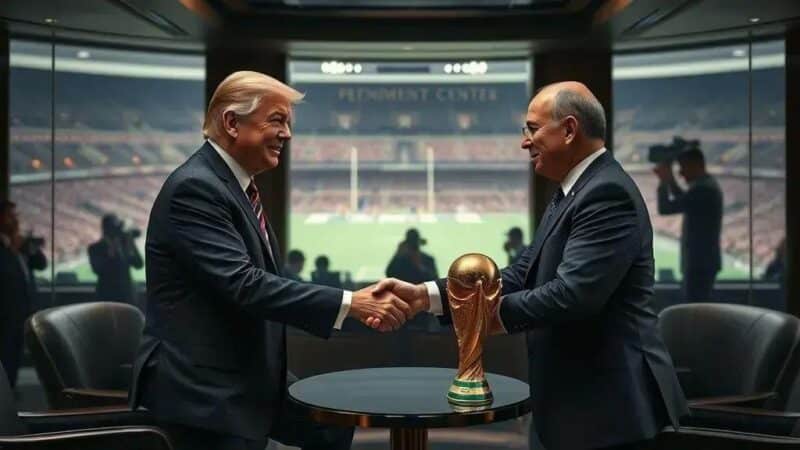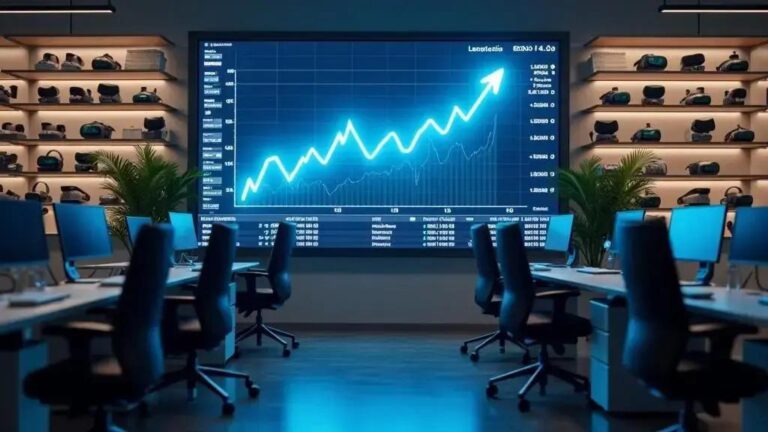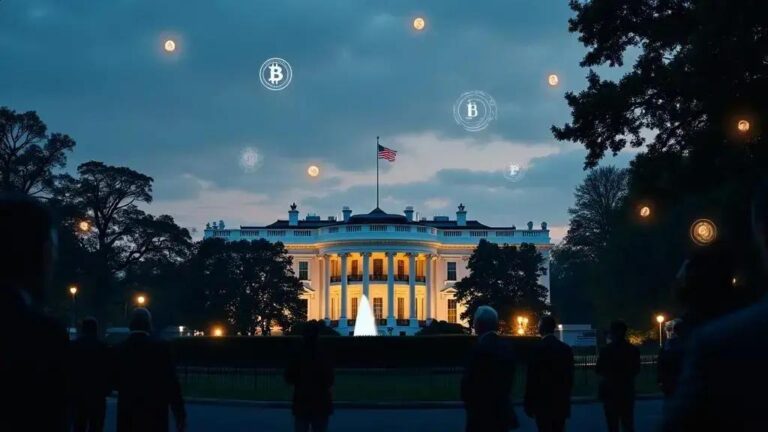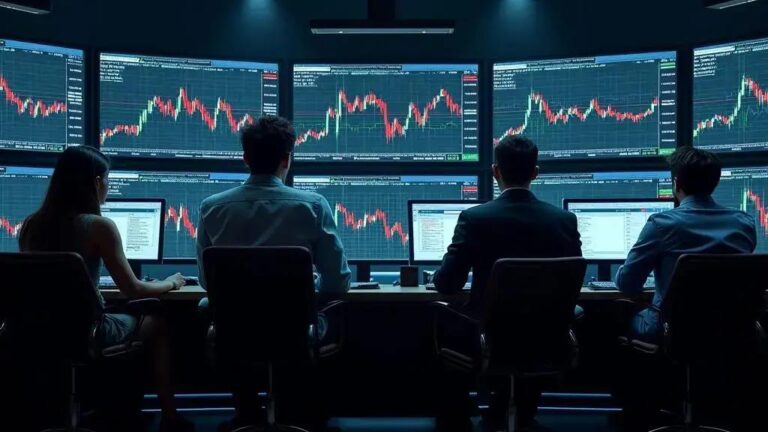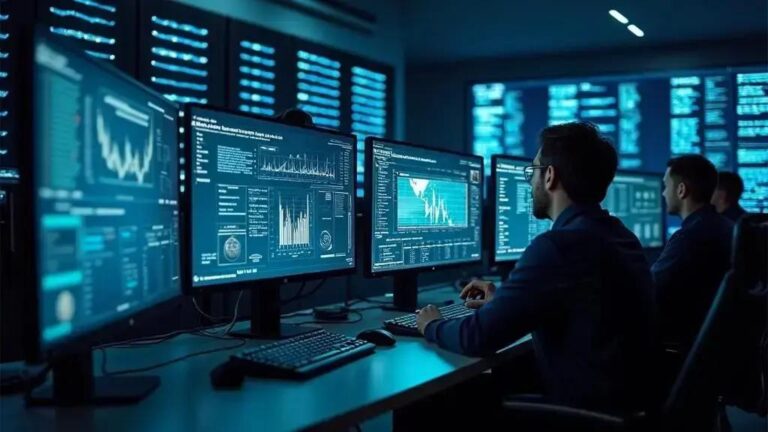World Cup fans might be surprised to learn how closely Donald Trump and FIFA president Gianni Infantino worked to bring the 2026 draw to Washington. Curious about the behind-the-scenes deals, the political gestures and the possible fallout? Read on — it’s part sport story, part political drama.
A chance meeting: the MetLife Stadium moment that sparked the plan
It all began with a simple meeting at MetLife Stadium in 2018. This wasn’t a formal summit, but a chance encounter. Donald Trump, then the U.S. President, was there. So was Gianni Infantino, the head of FIFA, soccer’s global governing body. They met in a luxury box during a soccer game. This moment would set big plans in motion for the World Cup.
During their chat, the idea of hosting the 2026 World Cup draw in Washington D.C. came up. It was a casual suggestion that quickly gained traction. This initial conversation was key. It laid the groundwork for a major international event. The two leaders discussed the possibilities. They saw a chance to bring the world’s biggest soccer spectacle to the U.S. capital. This unexpected meeting truly sparked the whole plan.
Why Washington and the Kennedy Center were chosen over Las Vegas
Choosing the right place for the World Cup draw was a big decision. Las Vegas was a strong option. It’s famous for its bright lights and entertainment. Many thought it would be a fun, exciting spot for such a global event. But Washington D.C. offered something different.
The U.S. capital brought a sense of importance and history. It’s home to major political figures and global leaders. Holding the draw there would send a strong message. The Kennedy Center, a famous cultural spot, was picked as the venue. This choice added a touch of class and prestige. It showed that the event was more than just a show. It was a significant international moment. This decision highlighted a desire for a grand, impactful statement over pure spectacle.
The evolving relationship between Donald Trump and Gianni Infantino
The connection between Donald Trump and Gianni Infantino grew over time. It started with that first meeting at MetLife Stadium. Their relationship wasn’t just about one event. It became a key factor in big decisions for the World Cup.
Trump, as U.S. President, had a strong interest in global events. Infantino, as FIFA President, needed political support for soccer’s biggest tournament. They found common ground. Their talks often went beyond formal meetings. They shared a desire to make the 2026 World Cup a huge success. This evolving bond helped shape where and how major World Cup events would happen. It showed how sports and politics can sometimes mix in powerful ways.
FIFA’s shifting alliances: Qatar, Saudi ties and global optics
FIFA, the powerful group behind the World Cup, is always making new friends. We’ve seen them build closer ties with countries like Qatar and Saudi Arabia. These new connections are very important for FIFA’s future plans. They involve big money and the chance to host huge events.
FIFA also cares a lot about how it looks to the world. This is called ‘global optics.’ They want to be seen as a strong and fair leader in sports. Working with different nations helps them keep this image. It also helps them spread soccer’s popularity everywhere. These changing alliances can affect where future tournaments are held. They also influence who gets to host major soccer events. It’s all part of FIFA’s plan to stay a key player on the global stage.
Political risks: immigration, security and the threat to host cities
Hosting the World Cup isn’t just about soccer; it brings big political challenges. One major concern is immigration. When millions of fans and visitors come, managing borders and entry can be tough. Countries need clear plans for who comes in and how long they stay. This can create political debates and logistical hurdles for host nations.
Security is another huge worry for host cities. Big events like the World Cup can be targets. Keeping everyone safe from threats is a massive job. This means lots of police, careful checks, and strong security measures. Cities must work hard to protect both locals and visitors. These challenges can put a lot of pressure on the cities chosen to host games. They need to be ready for anything to ensure a smooth and safe tournament for everyone.
Tradition vs. spectacle: the trophy gift and reactions from soccer officials
The World Cup has always mixed old traditions with grand shows. There’s a constant push and pull between keeping things classic and making them a huge spectacle. This was clear with the special trophy gift. It was a moment meant to be big and memorable, adding to the overall show.
This kind of event often gets different reactions. Some soccer officials really value tradition. They might prefer things to stay simple and focused on the game. Others might enjoy the new, flashy elements. They see them as ways to make the World Cup even more exciting for fans. These varied opinions show how hard it is to balance history with the desire for a modern, global show.
What the Washington draw means for the 2026 World Cup and future mega-events
The Washington D.C. draw for the World Cup was a big deal. It wasn’t just about picking teams. It showed how important the U.S. capital is for global events. This choice could set the tone for the entire 2026 tournament. It suggests a blend of sports and political significance.
This event might also influence how future mega-events are planned. Organizers could now look for cities that offer both a great venue and a strong political message. It moves beyond just choosing a stadium. It’s about making a statement on the world stage. This new approach could change how we think about hosting global spectacles for years to come.
Fonte: Fortune.com

